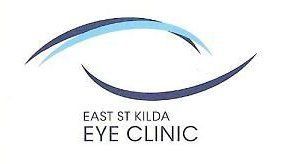85 Hotham Street, St Kilda East, VIC 3183 | Car park entrance from Chusan Street
85 Hotham Street, St Kilda East, VIC 3183 | CAR PARK ENTRANCE FROM CHUSAN STREET
GLAUCOMA SERVICES IN MELBOURNE
Glaucoma
Glaucoma is a disease of the eye that causes damage to the Optic Nerve which leads to progressive loss of peripheral vision. This damage is permanent, but treatment stops or slows the progression.
The eye produces fluid internally, called aqueous, which supplies nutrients inside the front of the eye. This fluid drains out through a circumferential drainage canal at the outer edge of the iris, covered by spongy tissue called trabecular meshwork.
If the aqueous production exceeds outflow, the intraocular pressure will increase and damage the sensitive retinal nerve fibres that make up the optic nerve.
There are several types of Glaucoma. The two main types are angle-closure or open-angle.
Closed-angle Glaucoma has a closed or narrow space where the iris meets the cornea limiting the drainage of aqueous into the circular canal. This results in a rise of intraocular pressure. It can develop very quickly and then require urgent attention. Laser iridotomy is a procedure to treat narrow angles. During a laser iridotomy, the light is used to create a small hole in the iris that forms your pupil which improves aqueous flow. Cataract surgery may also treat this problem.
Open-angle Glaucoma occurs when the angle where the iris meets the cornea is wide open. The drainage of aqueous is reduced in this type of Glaucoma due to increased resistance in the trabecular meshwork causing increase of intra ocular pressure (IOP). This form of Glaucoma usually develops slowly.
In normal tension glaucoma, the optic nerve becomes damaged even though eye pressure stays within normal levels.
Secondary Glaucoma occurs when there is an underlying cause for increased pressure such as inflammation or prolonged usage of steroids (cortisone). Pseudo exfoliation is the commonest cause of secondary Glaucoma, resulting from flaky material clogging the trabecular meshwork, leading to increased intra ocular pressure.
Treatment for open angle glaucoma consists of laser (SLT), eye drops and surgery.
Glaucoma is usually picked up during a routine eye test. It is more common over the age of 40 and when there is a family history of glaucoma

Testing involved in Glaucoma Diagnosis
- Vision
- Eye Pressure
- Corneal thickness - this measurement is usually tested once. Thin corneas are associated with faster glaucoma progression
- Gonioscopy – to assess the angle at trabecular meshwork where the eye fluid drain into the canal
- Visual Field Test (Perimetry) – As Glaucoma causes loss of peripheral vision, it is vital to perform visual field test to establish the functional loss caused by the disease and monitor progression. It is performed every 4-6 months.
- OCT- is a scan that measures the nerve fibre layer at the optic nerve, within retina and additional layers that are damaged by Glaucoma. This test is performed to establish initial structural (anatomical) damage and to monitor progression. An OCT test taken during initial consultation and then every 6-12 months
WE’D LOVE TO HEAR FROM YOU! CALL OUR FRIENDLY TEAM ON 03 9525 9455
BROWSE OUR WEBSITE
CONTACT INFORMATION
Tel: 03 9525 9455
Fax: 03 9525 9293
Address: 85 Hotham Street, St Kilda East, VIC 3183
CAR PARK ENTRANCE FROM CHUSAN STREET
Hours of Operation:
Monday - Friday: 8:30am – 5:00pm
By appointment only
ABN: 12436144168
OUR LOCATION
